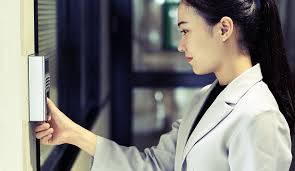What is pressure cooker used for?
The process of cooking food under high pressure steam while utilizing water or a water-based cooking liquid takes place in a pressure cooker, often known as an oven under pressure. High pressure prevents boiling and produces higher cooking temperatures that cook food more quickly. Denis Papin, a physicist, developed the pressure cooker in the seventeenth century. It functions by releasing air from the container and trapping steam made of the boiling liquid.
This is employed to increase internal pressure up to one pressure oven above ambient and provides one with superior cooking temperatures. Modern pressure cookers contain a number of safety measures to prevent the pressure cooker from maintaining an excessive level of pressure. These functions work in conjunction with high pressure oven thermal heat transfer from steam to enable cooking in between. In order to open the vessel after cooking, the steam pressure is decreased back to the ambient atmospheric pressure. On all contemporary devices, a safety lock prevents establishing while under pressure. In line with the New York Times Magazine, A portion of the reduction has been linked to consumer concerns about explosions, even though they are extremely rare with modern pressure cookers, as well as competition from other fast-cooking appliances, such as the microwave oven.
Modern pressure cookers have many more safety features, virtual temperature control, don't vent steam during cooking, are quieter, and are more environmentally friendly. These conveniences have contributed to the resurgence of pressure cooking. These strain cookers, often known as "vintage kind" strain cookers, work using a weight-changed or "jiggler" valve that releases strain as they operate. Some people consider them loud because the valve rattles when too much steam is released. Older stress cookers typically only offered one stress level, but starting in the 1960s, several models allowed the operator to change the load on the valve, so changing the pressure. Most pressure cookers nowadays are updated versions of older models with modern safety features including a mechanism that prevents the cooker from being opened until it has completely depressurized.
They work with a valve that is spring-loaded and frequently concealed from view in a proprietary mechanism.
The use of two or more stress settings helps to define this technique. Some of these strain cookers operate without venting and release no steam during operation; instead, they employ a growth indicator with markings to reveal the strain level. Only when the pan is opened or as a safety measure do these emit steam.
The electrical stress cookers, often known as "third era" stress cookers, were introduced following the range-pinnacle pressure cookers. These feature an electric heating source that is regularly adjusted to maintain the operating temperature and pressure. They also feature the spring-loaded valve mentioned above and are normally non-venting while cooking. There is a timer built into an electric stress cooker. There are three generations of electrical pressure cookers based on the ability to control the cooking process. get more info...
.jpg)

Comments
Post a Comment